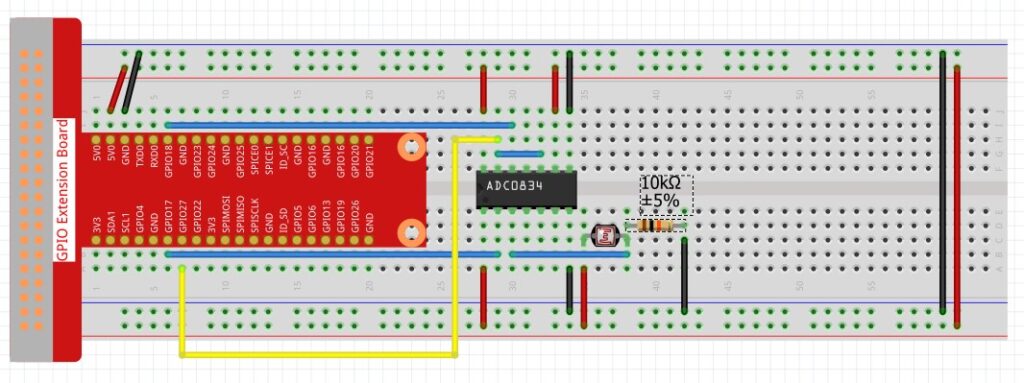In this video lesson we show how to use Haar Cascades in OpenCV on the Raspberry Pi to find and track faces and eyes. We show the intelligent way to find eyes, such that CPU resources are not wasted. Below we show the code for your convenience.
1 2 3 4 5 6 7 8 9 10 11 12 13 14 15 16 17 18 19 20 21 22 23 24 25 26 27 28 29 30 31 32 33 34 35 36 37 38 39 40 41 42 43 44 45 46 47 | import cv2 from picamera2 import Picamera2 import time picam2 = Picamera2() dispW=1280 dispH=720 picam2.preview_configuration.main.size = (dispW,dispH) picam2.preview_configuration.main.format = "RGB888" picam2.preview_configuration.controls.FrameRate=30 picam2.preview_configuration.align() picam2.configure("preview") picam2.start() fps=0 pos=(30,60) font=cv2.FONT_HERSHEY_SIMPLEX height=1.5 weight=3 myColor=(0,0,255) faceCascade=cv2.CascadeClassifier('./haar/haarcascade_frontalface_default.xml') eyeCascade=cv2.CascadeClassifier('./haar/haarcascade_eye.xml') while True: tStart=time.time() frame= picam2.capture_array() frame=cv2.flip(frame,-1) frameGray=cv2.cvtColor(frame,cv2.COLOR_BGR2GRAY) faces=faceCascade.detectMultiScale(frameGray,1.3,5) for face in faces: x,y,w,h=face cv2.rectangle(frame,(x,y),(x+w,y+h),(255,0,0),3) roiGray=frameGray[y:y+h,x:x+w] roiColor=frame[y:y+h,x:x+w] eyes=eyeCascade.detectMultiScale(roiGray,1.3,5) for eye in eyes: x,y,w,h=eye cv2.rectangle(roiColor,(x,y),(x+w,y+h),(255,0,0),3) cv2.putText(frame,str(int(fps))+' FPS',pos,font,height,myColor,weight) cv2.imshow("Camera", frame) if cv2.waitKey(1)==ord('q'): break tEnd=time.time() loopTime=tEnd-tStart fps=.9*fps + .1*(1/loopTime) cv2.destroyAllWindows() |

